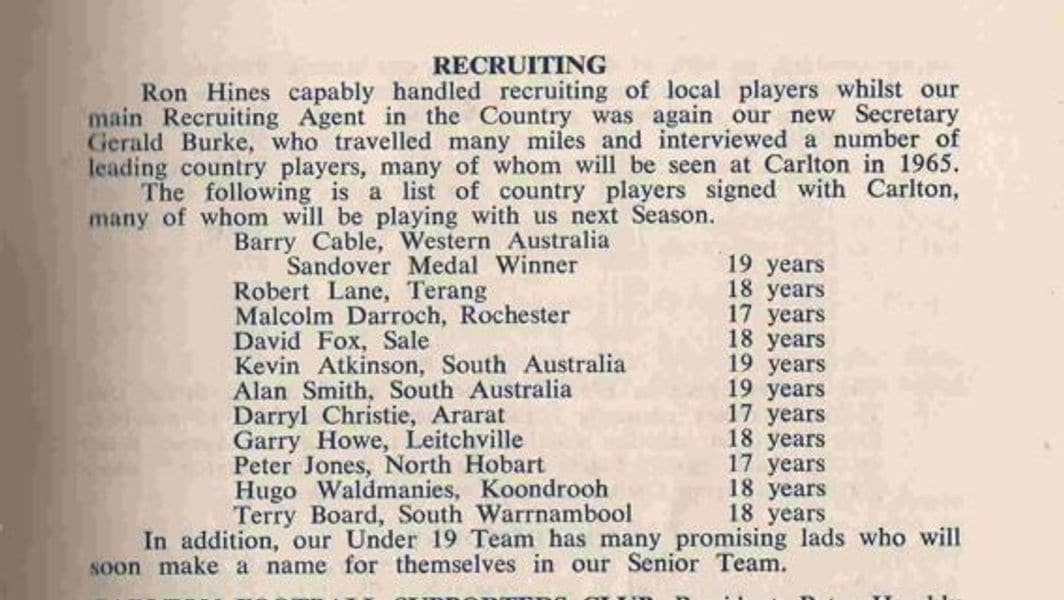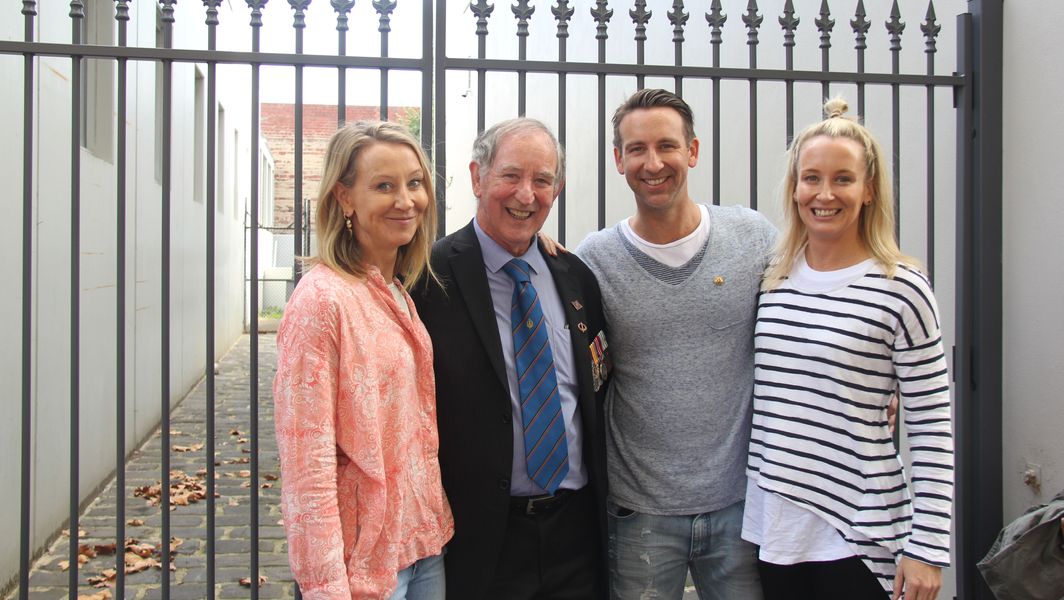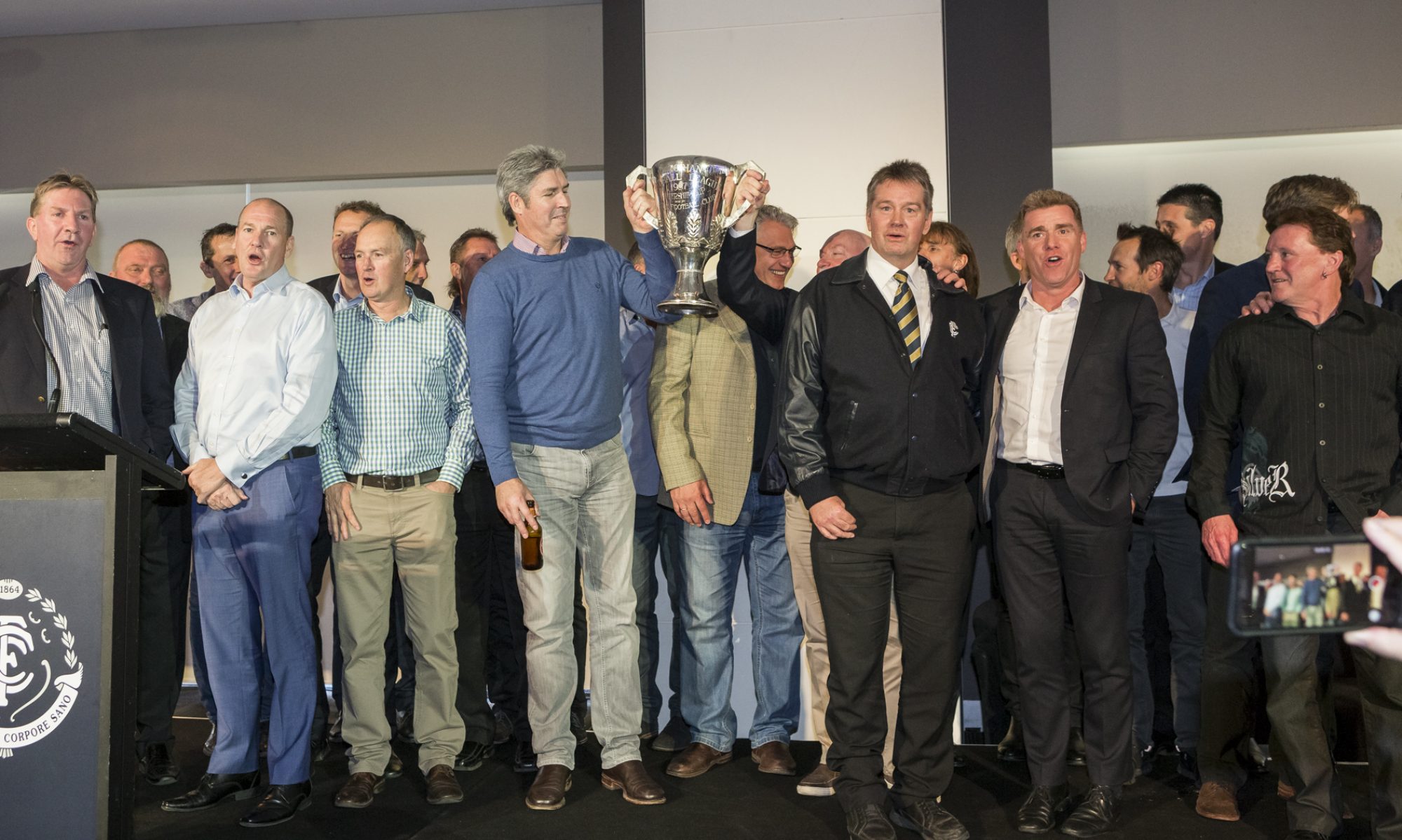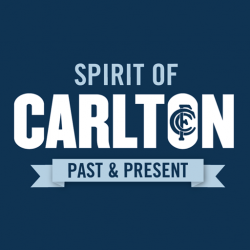Only recently has Carlton become aware of a reserve-grade player who served in the Vietnam War.

IN THE tranquil surrounds of Princes Park, within short walking distance of the old Carlton ground, stands a stone memorial and an Aleppo pine tree – evocative reminders that through the course of two world wars the Carlton Football Club was not untouched.
The memorial carries the names of 17 former footballers who gave their tomorrow for our todays – 12 in World War I, five in World War II. The lone pine, propagated from the seed of a cone recovered by a soldier on the Gallipoli battlefield in August 1915, similarly serves as a salient reminder of those wartime sacrifices.
The Carlton Football Club’s annual reports carry the names of dozens of players who answered their nation’s call in those global conflicts, but only recently has it become aware that one of its own – a reserve-grade player from Ararat by the name of Daryl Christie – served in the Vietnam War.
Flick the yellowing pages of the 1964 Annual Report and you’ll find his name – Daryl Christie, then 17, amongst a group of 11 country hopefuls to have signed with the Club, in what was Ken Hands’ final season as Senior Coach.

Daryl Christie, IKON Park, August 2023.
Featured with Christie in that group of prospectives are North Hobart’s Peter Jones, South Warrnambool’s Terry Board and Kerang’s Robert Lane – each future Carlton senior players – with ‘Percy’, a four-time Carlton premiership player, coach and director the most prominent.
Christie joined Carlton after earning his chops at Ararat where he first turned out for the juniors with his lifelong friend the future Collingwood centreman Barry Price – and in 1963, on the recommendation of a Carlton spotter, he accepted an offer to participate in two practice matches early in the following year.
“I was told not to sign anything by the people in Ararat, but after those two games Ken Hands got me to sign on – which I was quite keen to do anyway because I was a keen Carlton supporter as was my dad,” Christie said.
“My first memory of Carlton came in the very first practice match at Princes Park, and I was on John Nicholls’ team. Before the ball was bounced, John came over go me, introduced himself and said: ‘As soon as the ball is bounced, you run, I’ll get the footy and handball it to you’, which he did.
“That made me feel really good.”
Following that brief Carlton foray, Christie headed home to Ararat and played out the ’64 season under the watch of the former Carlton and St Kilda footballer Brian Moloney.
In 1965 Christie returned to Carlton to give League football a serious crack – coincidentally when the late great Ronald Dale Barassi rocked the football world to the core in accepting the role of Carlton Captain-Coach.
Christie was included on the Club’s supplementary list of players and by way of permit turned out for a handful of reserve grade games in 1965 and ’66 wearing the No.43 later made famous by David McKay and Anthony Koutoufides. In that time he struck up a friendship with fellow players Jim Pleydell and the gangly Coburg teenager Robert Walls.

Daryl Christie’s name appears amongst the list of country hopefuls in the Club’s Annual Report of 1964.
And then his name was called as a conscript for two years of National Service.
“That happened around July 1966,” Christie said. “I was still at Carlton at the time and somehow or other I had a phone number I could ring to see if I’d been called up. I rang that number and was told my birthdate had come out of the barrel and that I’d been in the Army by September.
“I was quite happy about it. At the time I was still a bit homesick for Ararat, having first moved to Glen Iris, then Burwood, and working at the Commonwealth Bank at Chadstone – and had I not got injured in a reserve game for Carlton against Collingwood I might have been close to getting a senior game – but that’s life, and I told the then secretary Gerald Burke that I was off to the Army.”
Military records attest that Lance-Corporal Daryl Charles Christie, service No.3789736, served with the 1st Battalion, Royal Australian Regiment in Vietnam from 18 March-30 July in the Carlton premiership year of 1968.
Christie’s wartime story – juxtaposed with the less-publicised horrors of the battle of Coral – only came to Carlton’s attention after 60 years when he reconnected with the Club in August. That happened when he fronted up to IKON Park in August for the launch of Dan Eddy’s book Blue Brilliance, which details the ferocious Carlton-Richmond rivalry of the late 1960s and early ’70s.
At the launch, and with some trepidation given his quiet and humble nature, Christie approached the two-time Carlton premiership player and dual club best and fairest Geoff Southby.
“This was the best thing that happened,” Christie said of the encounter.
“I got to the book launch a little bit early, saw Geoff and said to him ‘I’d like to shake the hand of a Carlton Legend’. I got him to sign a copy of the book, and while he was signing it I said ‘I used to be down here myself, in Barassi’s first two years 1965 and ’66’.
“Geoff said to me ‘You should join the Spirit of Carlton’, and I then told him I got called up in the Army and went to Vietnam.”
Of his time in Vietnam, the war and how it impacted upon him, Christie said “I became a man pretty quickly”.
The following is his story in his own words.
Daryl’s story
To say my life revolved around football and my support for the Blues would be an understatement.
I grew up in Ararat a small country town in the Wimmera District. My parents always said that if they couldn’t find me, the first place they looked was a footy field or the back paddock.

Daryl Christie’s official conscription photograph, 1966.
School took second place and was never a priority as I would wag school to kick the footy around and play with my mates.
I played with Ararat Football Club from a young age. Then in 1964 when I was 17 years of age I was invited to play a couple of practice games with Carlton.
That resulted in me being recruited to Carlton in 1965. If I thought that footy training was hard, it reached another level all together under Ron Barassi.
The life around an elite club was and still is an amazing experience for me. It was a time of fitness, growth and maturing into a higher level of football.
The Vietnam War was ‘on’ but really didn’t touch the lives of many Aussies, as it was ‘somewhere over there’!
Then in the mid 1960s, conscription hit many families and football clubs as all young men were mandated to register for National Service.
Playing football for an elite club did not qualify as a reason to be excluded from conscription. I registered in mid-1966, and waited impatiently as the footy season was in full swing. Until I finally rang to be advised I had been conscripted for two years of Military Service, finally enlisting in the Army towards the end of the footy season in September 1966.
Things moved rapidly from then and after some intense training in jungle warfare, I was sent to Vietnam with the 1st Battalion the Royal Australian Regiment, (1RAR). It became obvious when I landed with an advance party that this war was ‘real and deadly’.
On 12 May 1968, we were tasked to set up a Fire Support Patrol Base (FSPB) named Coral, to impede the enemy progress into and out of Saigon (Ho Chi Minh City).

Lance-Corporal Christie, Saigon, 1968.
On 23 May another separate FSPB was set up under the name of Balmoral a distance away from us at Coral.
Our move into Coral was delayed due to the urgent need for helicopters by the Americans as they were engaged in heavy fighting with the North Vietnamese Army and Viet Cong.
One of our Commanders flew over the areas and was very concerned that we were to be helicoptered into a very hot zone. Delays and general confusion saw us not fully dug in by nightfall. As a result of this our Mortar Platoon and the Artillery Guns of 102 Field Battery were left isolated from the rifle company’s which in the normal course would be protecting them. The enemy were watching.
Then in the early hours we were hit by huge numbers of enemy seeking to gain control of our guns and mortars.
Needless to say, it was ferocious, bloody and the first time since the Second World War that Australian soldiers had been involved in hand-to-hand combat with the enemy. It was Mother’s Day 1968. I also ‘celebrated’ my 22nd birthday in the jungle and battlefield of Vietnam at Coral.
Due to the bravery of the Aussies that night, control of the guns were wrested back from the enemy.
In the morning I will never forget the sight of dead enemy and some of my mates on the battlefield. All the bodies had to be removed by the soldiers who had fought that night. This was to set the scene for the biggest, bloodiest, longest and most sustained battle fought by Australians in Vietnam.
We were constantly under attack, or under fire in the jungle, often for weeks at a time. Coral was overrun by large forces of enemy soldiers on two occasions, in the early hours of 13 and 16 May. Coral went from 12 May 1968 till 6 June. Nearly a month of ever-present danger.
Twenty-one were killed at Coral, and over 100 wounded. I lost some good mates. Many of these Aussies were in their early 20s.
We remember and commemorate every year on 12 and 13 May.
Everyone has heard of the battle of Long Tan, that went for about three hours, yet no one knows of the huge, bloody battle of Coral. Because of the number of casualties, the Government of the day kept it quiet from the public.
When I was interviewed by Neil Mitchell many years later, he was amazed that this battle had not been recognised.
Many veterans who went to Vietnam would share different stories, as some were in base and never went outside the wire on patrol to engage the enemy. The time I was at Coral; most of it was spent outside the wire away from the safety of the base. The jungle was unforgiving, biting ants, leeches and no fresh hot food for weeks on end.
We loved getting back to base, shower, clean clothes, fresh food and clean fresh water.
Fifty years after the event, and with the freedom of information, the Battle of FSPB Coral was grouped with FSPB Balmoral and other units to be awarded a Unit Citation for Gallantry — long overdue recognition.
After returning from Vietnam, I was lucky to go back to my hometown of Ararat. Once again footy was my healing and saving grace as I again played football and linked up with my mates. This helped me settle with few hassles, whilst many Vietnam veterans received an awful time. For me, no-one talked about it, and I put it to the back of my mind as much as possible, as most people really didn’t understand or care about an unpopular war.
However, many years later – as is often the case – I had to face and address what had happened during my time in Vietnam and more particularly at Coral. Thankfully, with the help of my wife, I came through it.
I was fortunate to meet my wife a couple of years after returning from Vietnam, and we went on to have three amazing (now adult) children, and now have four precious grandchildren.

Daryl Christie, together with his and wife Robyn’s three children – Peta in the pink top, Ben next to Daryl, and Olivia.
We often reflect that the children of war veterans see and hear things, and inherently learn things that most other kids would have no perception of.
One of the positive things the kids laugh about is that they were Blues fans and members before they even knew there were other footy teams.
I am also proud that our grandchildren have been recruited: it’s one of my lasting proud legacies.
I managed to play 120 games with Ararat and have been awarded Life Membership to the club as I played in Wimmera League teams and played with Shepparton in the Goulburn Valley league.
Country living, involvement in football, community and family is very healing and beneficial for a veteran. The various clubs I played with in several leagues all helped enormously as my job took me on a journey for many years around Victoria.
Over many years I have had a commitment, like many Vietnam Veterans, to ensure services and support is available to all veterans. My involvement with Tramways East Melbourne RSL Sub-branch (soon to be amalgamated with Camberwell RSL Sub-branch) as Treasurer has spanned years, with an underlying deep commitment to assist my mates wherever possible.
There has also been a commitment to talk to people about Coral, and the impact it had on families. The same with every combat veteran, talking about it has allowed me to be closer to my wife and kids.
So once again I am grateful to be able to provide a brief glimpse into an ex-Carlton footballer’s time at the Battle of Fire Support Patrol Base Coral.
I am now able to reflect on my fortunate life with a family and many friends and Army mates.
We survived.
Perhaps the greatest reflection is that I consider my time at Carlton, and the fitness and discipline I learned there, helped me a great deal during my Army days. Also, the fact that I had a welcoming community and footy club in the country to return to helped me a great deal.
At a recent speech delivered at the Victoria Barrack Officers Mess I talked about my football career and the impact it had on my life, health and fitness, plus the special people I met when I captained 1RAR to a premiership prior to leaving for Vietnam.
I will be forever grateful for the mates I have through football and the Army, and now being able to go full circle back to the Club I admire and respect to tell my story and thank for allowing me membership of the Spirit of Carlton.
Most of all, to be associated with the best club ever. Carlton. The Mighty Blues.

